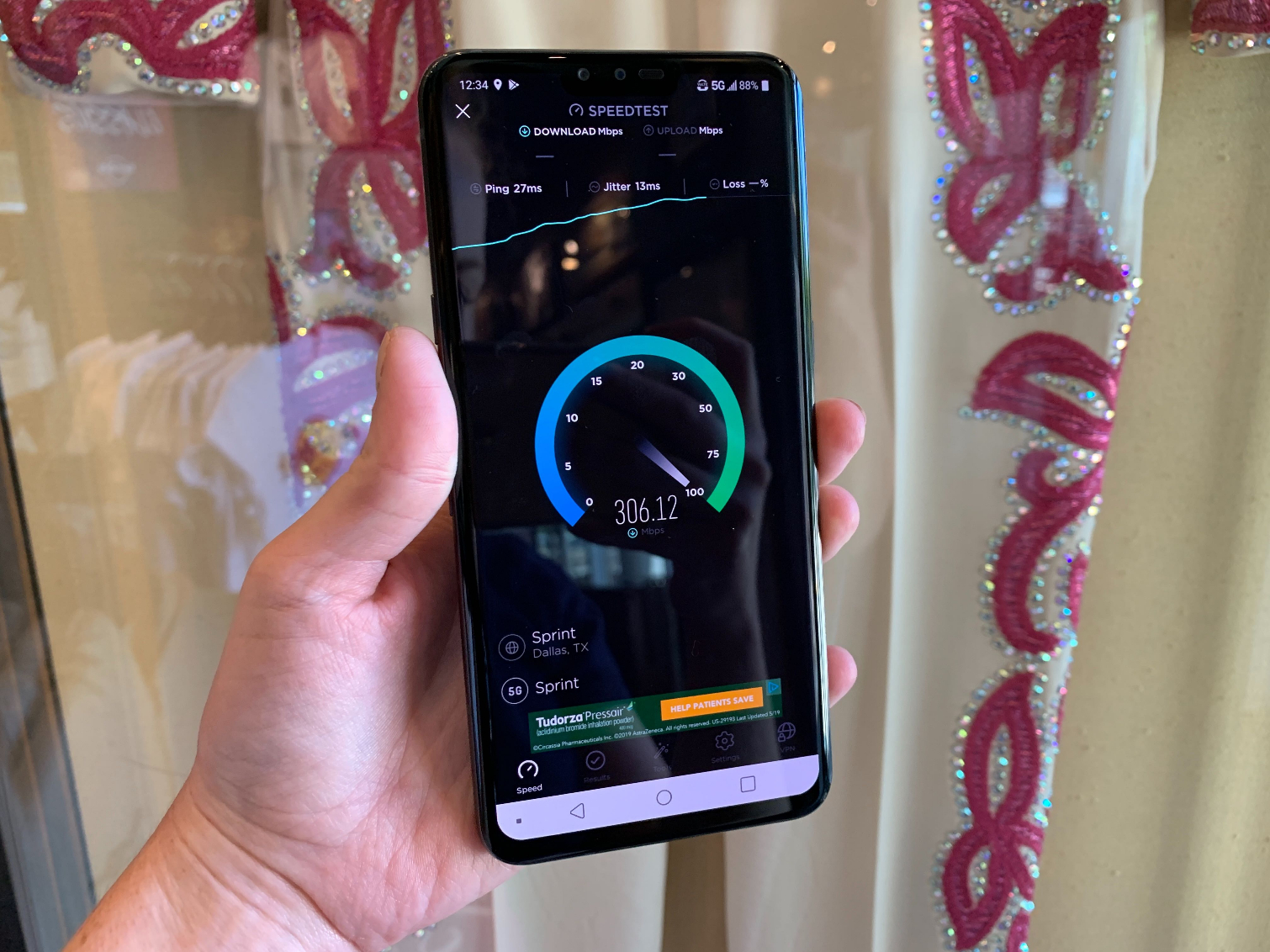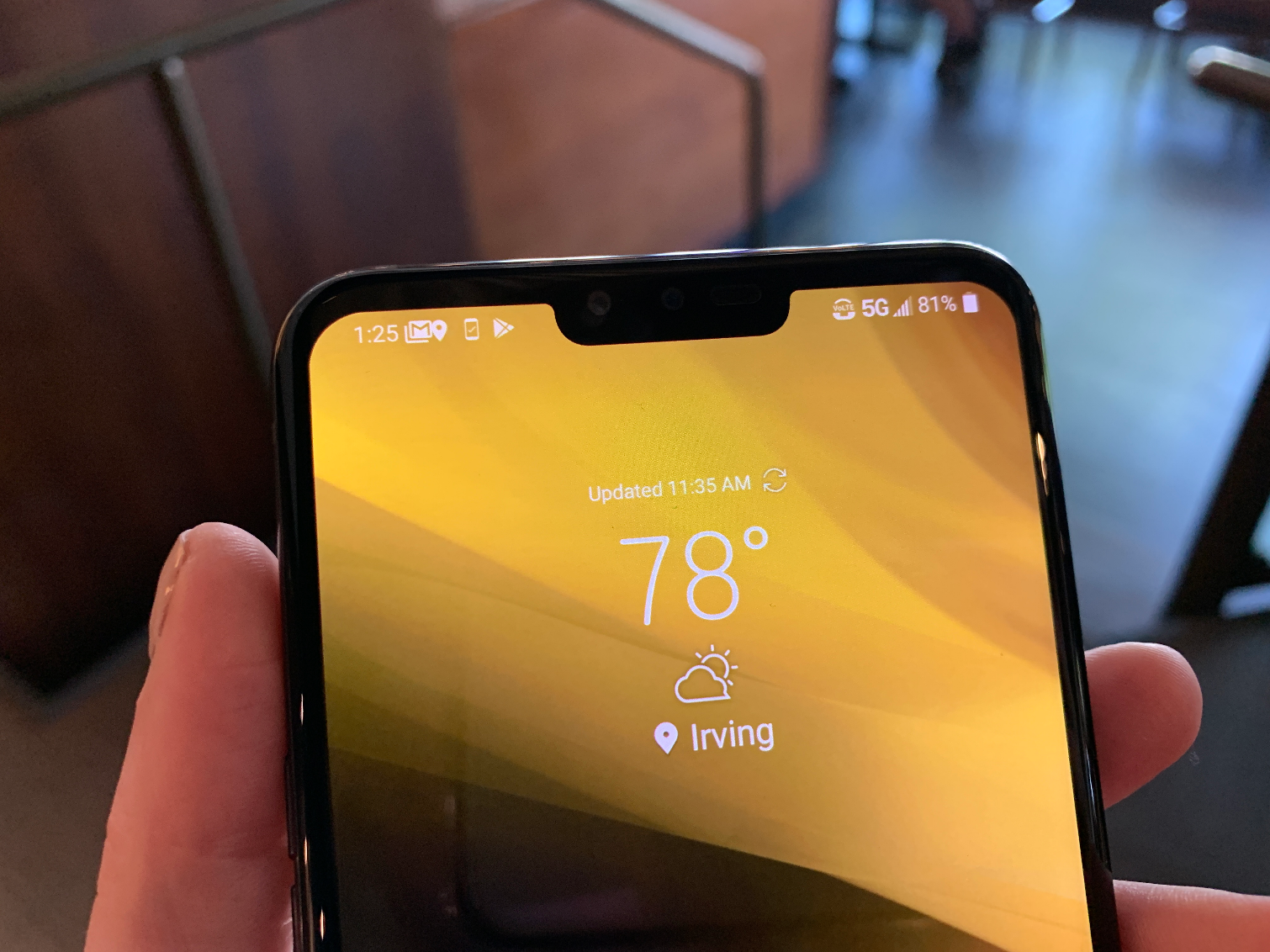First Sprint 5G Speed Tests: More Reliable Than Verizon
Sprint's 5G network in Dallas isn't as speedy as Verizon's 5G in Chicago, but the coverage is broader.
Editor's note: Updated 6:15 p.m. ET on May 30 with more impressions from on-the-ground testing of Sprint's 5G network.
DALLAS — Sprint is blanketing four metropolitan areas with 5G today (May 30), with five more cities coming online soon. So how fast is Sprint's 5G?

I tested LG’s V50 ThinQ 5G, the first 5G smartphone on Sprint’s network, in Dallas to see if Sprint’s approach to 5G is faster or more reliable (or both) than Verizon’s millimeter-wave 5G network, which we’ve tested twice in Chicago in recent weeks.
We already know that Sprint’s 5G network will be slower than the gigabit average speeds 5G promises. The company is using mid-band spectrum to build out its 5G coverage, which has benefits — more coverage — and disadvantages — slower speeds.
"We want to set the right expectations,” Sprint Chief Technology Officer John Saw said during Sprint’s 5G launch event Thursday. “You should see more than 100 MBps when you’re driving around with your phone.”
That’s accurate.
5G coverage: Sprint blankets cities with faster speeds
Get instant access to breaking news, the hottest reviews, great deals and helpful tips.
Sprint loaded reporters on a bus and drove us around Irving, Texas, to demonstrate the truly mobile nature of its 5G network. Verizon’s millimeter-wave technology offers gigabit speeds and near-instant Netflix downloads, but only if you stand on specific street corners in Chicago. Sprint is using a different approach.
The carrier is taking its existing 2.5 GHz spectrum, the same cell towers that already dot cities around the country, and adding new radios that can offer LTE Advanced and 5G simultaneously. That means Sprint’s 5G coverage should be more reliable and more widespread than Verizon’s mmWave network, which requires new infrastructure — and more of it.
Sprint used an app called Volcano to speed-test the carrier’s 5G network speeds in real-time. As we cruised around Irving, the bus stayed locked onto a 5G signal the entire time, with three brief hand-offs to LTE that were imperceptible.
- More: A fast VPN can help you get the most out of your network

Then a Sprint executive compared download speeds between a Samsung Galaxy S8 on an LTE network against the bus’s download speeds, using Ookla’s Speedtest app for both. The S8 on LTE hit 89 megabits per second, which is extremely good for an LTE device, but the bus averaged 288 Mbps. In some instances, download speeds cleared 700 Mbps, though usually we hovered between 300 and 600 Mbps.
LG V50 ThinQ 5G: What it's like to download apps and videos on a 5G phone
After disembarking from the 5G bus, I got my hands on a V50 ThinQ 5G. First I did a basic benchmark: The V50 hit 171 megabits per second indoors on Ookla’s Speedtest app, pinging a Sprint server in Dallas. Then I downloaded PUBG Mobile, a gigantic 1.86GB game that Google Play highly recommends you install over Wi-Fi. It took just 1 minute and 30 seconds to download, maintaining 5G signal the whole time. Downloading the same game on Verizon’s 5G network in Chicago took us 2 minutes and 17 seconds.

I traveled from Irving, Texas to a Hard Rock Cafe near downtown Dallas, and the 5G indicator remained on for most of the 10-mile ride. The occasional dips into LTE were brief. In Dallas, download speeds hovered between 350 and 450 Mbps — nowhere close to the 1 Gbps we saw on Verizon's network in Chicago, but the V50 stayed more reliably connected to the 5G network. I downloaded a full, 24-episode season of Parks and Recreation in just shy of 8 minutes on Sprint's 5G network, which I thought was solid — but then I downloaded the same to my iPhone XS on AT&T's LTE network in 7 minutes and 8 seconds. Download speeds averaged 104 Mbps on AT&T's LTE network in Ookla's Speedtest app.
Then I headed to West Dallas, a medical district filled with hospitals and specialized facilities that could definitely make use of 5G. However, speed tests there were less impressive. I tried to download Wine Country for my flight back to New York (yes, I've heard the bad reviews about it; no, I don't care). After 5 minutes, the 1 hour and 48 minute-long film had only downloaded a quarter of the way. I got bored of watching its progress and closed out Netflix.
Then I headed up to a suburban shopping center in sprawling North Dallas. The coverage along my 12-mile ride between the two parts of town was evenly split between 5G and LTE, and I didn't notice much in the way of hand-off (except for the indicator at the top of the device). I wandered between an AMC movie theater and a Yard House, measuring speeds along the way. I topped out at 171 MBps.
Speed tests: Promising, but not impressive
Sprint provided a list of locations to test its 5G network to journalists unfamiliar with the Dallas area, including myself. I was surprised that those locations didn't offer anything close to gigabit speeds — in fact, they were usually well under 200 MBps. The carrier later said that load testing on the network may have slowed the network, but even when Sprint engineers tested download speeds at the recommended locations, they didn't clear 400 MBps.

That's not necessarily a bad thing. Sprint is focusing more on reliability and coverage than speed, so more people will be able to get on a 5G network in their pockets of 5G launch areas. But I wasn't blown away by what I experienced on Sprint's 5G network. After years of hearing about lightning fast speeds that will change the world, create new industries and download videos to your phone instantly (#priorities), I was underwhelmed.
Battery life: What 5G will do to your phone
The LG V50 ThinQ packs in a 4,000 mAh battery, which is a safety net for 5G use. Sprint says its 2.5GHz approach to 5G isn't expected to consume exponentially more battery life than LTE, but LG beefed up its battery just in case. After three hours of heavy use, the phone's battery indicator dropped down to 70%. That's after using the V50 to download a full season of Parks & Recreation, make a phone call, download PUBG Mobile and run many, many speed tests. That's not bad.
Outlook
Verizon's 5G network forces you to chase down a strong signal. Sprint's 5G network offers widespread coverage, but nowhere close to the speeds enabled by millimeter-wave.

The reality is that a truly robust 5G network that offers full coverage across the country and delivers the gigabit speeds we've been promised will need to take a multi-pronged approach. Verizon's millimeter-wave network, Sprint's mid-band approach and T-Mobile's low-band spectrum are all necessary to build out the breadth and depth of a 5G network that can actually win the "global race" that we're apparently in.
We're still waiting.
Caitlin is a Senior editor for Gizmodo. She has also worked on Tom's Guide, Macworld, PCWorld and the Las Vegas Review-Journal. When she's not testing out the latest devices, you can find her running around the streets of Los Angeles, putting in morning miles or searching for the best tacos.
